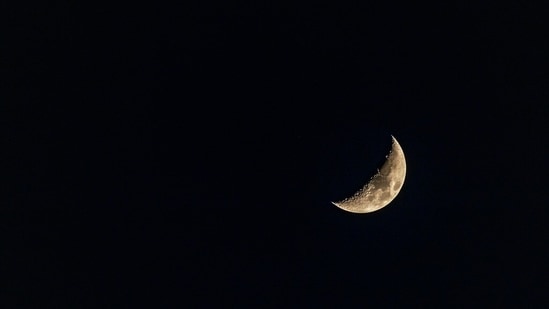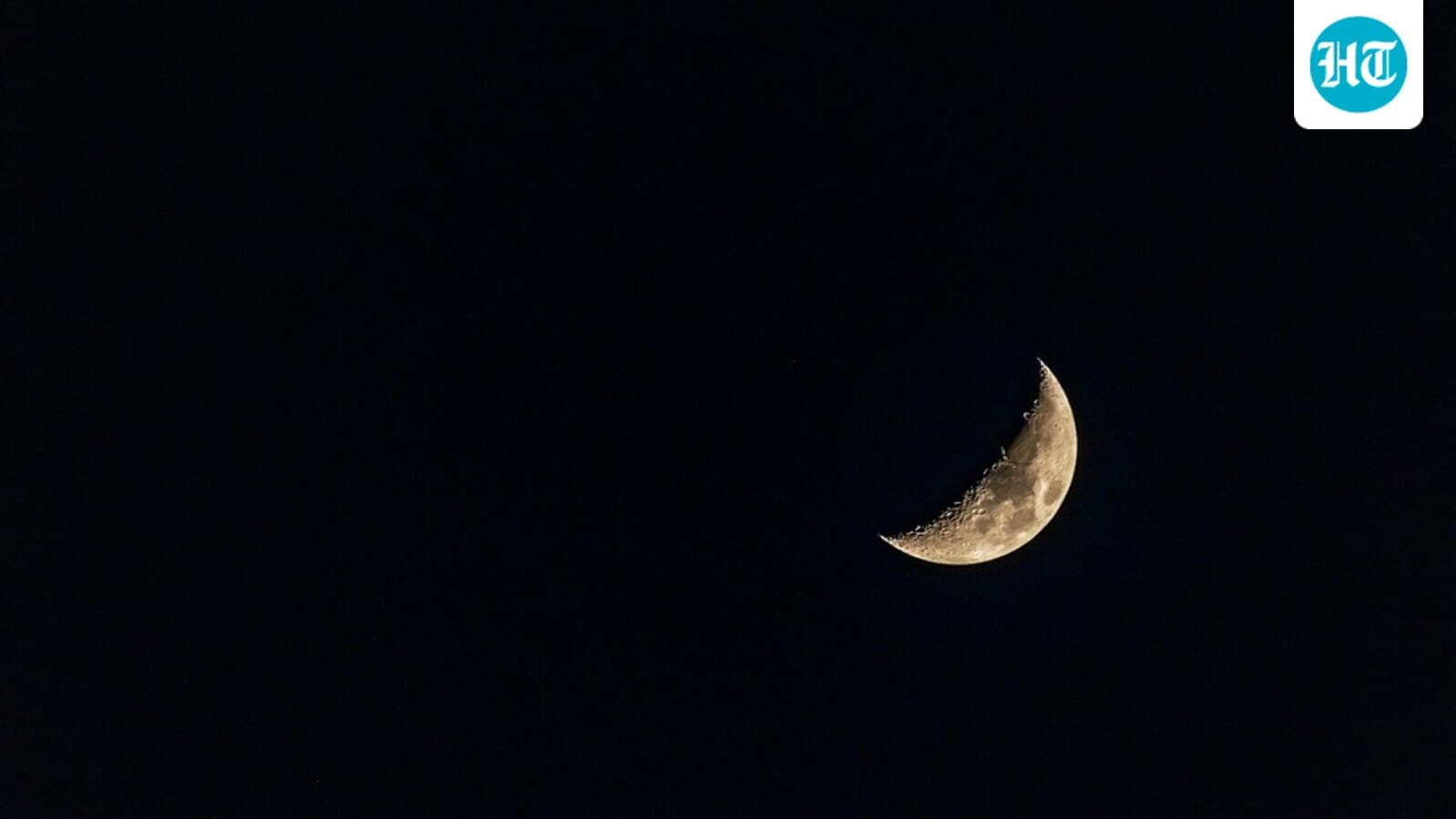On Thursday, September 19, a paper-thin waning crescent moon will rise before dawn, sliding close to Venus and Regulus in the eastern sky. Only about two percent of the moon will be lit, one of its quietest looks of the month, according to Space.com.
 A rare waning crescent moon and Venus occultation will be visible on September 19. Here are some tips to watch(Representative image/Pixabay) Rare celestial event: Moon to rise with Venus and Regulus
A rare waning crescent moon and Venus occultation will be visible on September 19. Here are some tips to watch(Representative image/Pixabay) Rare celestial event: Moon to rise with Venus and Regulus
The crescent moon will climb above the eastern horizon roughly two hours before sunrise with Venus right below it. Meanwhile, Regulus, the brightest star in Leo, will be visible further out.
During the rare celestial event, the moon and Venus will sit about a pinky finger apart at arm’s length – just one degree. A faint glow, known as Earthshine or the Da Vinci glow, will accompany the moon’s dark side.
This soft glow happens when sunlight bounces off the Earth and back to the lunar surface. It is best viewed near the new moon during a lunar cycle.
Additionally, Jupiter will pose as another bright marker, sitting high in Gemini, near the twin stars Castor and Pollux.
Also read: What is Apollo? Australia’s new laser weapon can destroy 200 drones without power supply
Venus occultation: Timing, visibility
As per Space.com, for viewers in Europe, Canada, Greenland, Russia, Asia, and Africa, the moon will cover Venus in what is called an occultation. The celestial event will start at 6:34 am ET (10:34 GMT) and end by 10:26 am ET (14:26 GMT).
Also read: iOS 26: AI summaries return to iPhone news, entertainment apps, Apple warns…
Tips to watch moon and Venus occultation
Skygazers can see Venus disappear behind the moon’s edge and then reappear. It is advised to use either binoculars or telescope for better viewing conditions.
Experts recommend moving away from the city to watch celestial events like these. Rural fields, open beaches, or higher grounds have clearer skies. For night sky photography, long exposure setting on the camera fixed on a tripod will allow sky gazers to capture the slim crescent moon with Venus next to it.
In order to track moon phases and its path, night sky enthusiasts can use apps like SkyView or Star Walk. Additionally, one can also check with their local clubs as many run early-morning watch sessions with in-house telescopes.
The waning crescent is not bright, but with Venus, Regulus, and Jupiter all visible, September 19 offers a rare, calm sky worth catching.
FAQs:What is the waning crescent moon?
It is the last visible phase before a new moon, showing only a slim arc of light.
Where will the occultation of Venus be visible?
Across Europe, Canada, Greenland, Russia, Asia, and Africa.
How can I observe the moon more clearly?
Use binoculars or a telescope and head to dark, open skies away from city lights.

